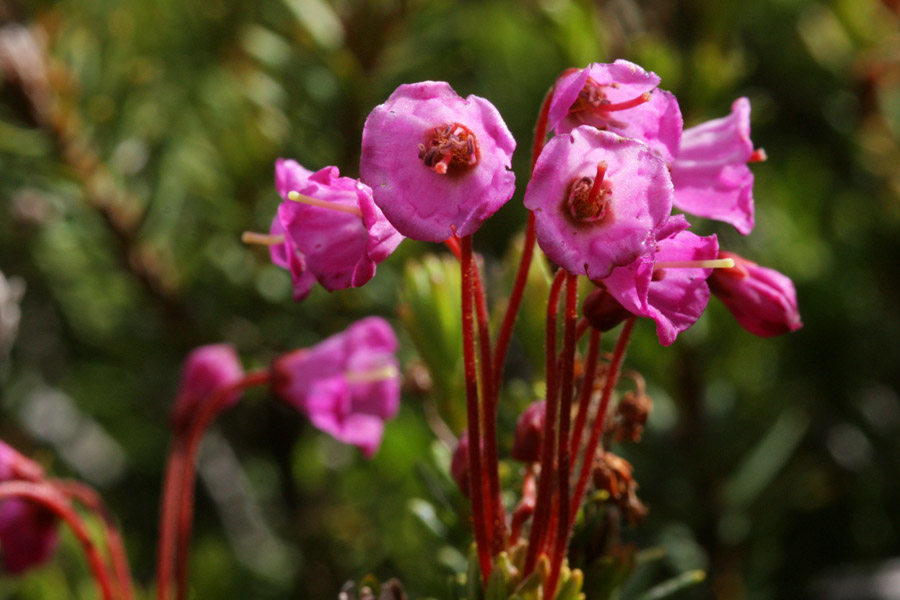
|
Family: Ericaceae |
Shrubs. Stems spreading to erect, (much-branched); young branches usually glandular-hairy, older branches glabrous or puberulent, (roughened peglike projections remaining after fall of leaves, exfoliating). Leaves persistent, alternate; petiole present; blade coriaceous, margins entire, serrulate, or glandular-serrulate, (appearing revolute, abaxial surface less than 1/3 visible). Inflorescences terminal, umbellate, corymbiform, or spikelike clusters, 2-30-flowered, sometimes flowers solitary; perulae absent. Flowers bisexual, radially symmetric, sepals 5, connate basally; petals 5, connate for 1/2+ their lengths, corolla deciduous, urceolate, campanulate, or cylindric; stamens (8-)10, included or exserted; anthers not awned, dehiscent by terminal slits; ovary 5-locular; style included or exserted; stigma capitate. Fruits capsular, broadly ovoid to globose, dehiscence basipetally septicidal. Seeds 100+, ellipsoid, narrowly winged, not tailed; testa smooth. x = 12. LEAVES: linear, needlelike, revolute, leathery, crowded and sessile. INFLORESCENCE: terminal umbellate racemes. FLOWERS: perfect, actinomorphic; sepals 5-lobed; corollas bell to urceolate, 5-lobed; pedicels bracteate; stamens 10; anthers elongate, awnless; ovaries superior, 5-celled; styles filiform, capitate. FRUITS: septicidal capsules with many seeds. NOTES: Ca. 7 spp., circumboreal. (Greek: a sea nymph). REFERENCES: John L. Anderson , 2008, Vascular Plants of Arizona: Ericaceae. CANOTIA 4 (2): 21-30. Fls mostly 5-merous; cal deeply lobed, persistent; cor ovoid and constricted at the throat to campanulate, shallowly to deeply lobed; stamens twice as many as the cor-lobes; anthers narrowly oblong, shortly 2-lobed above, each lobe with a terminal pore; ovary mostly 5-locular; style stout, about equaling the stamens; stigma capitate; capsule septicidal; low or depressed shrubs with small evergreen lvs and one to few fls on erect pedicels from the axils of the upper lvs, forming a small umbelliform cluster. 7, N. Temp. and Arctic. Gleason, Henry A. & Cronquist, Arthur J. 1991. Manual of vascular plants of northeastern United States and adjacent Canada. lxxv + 910 pp. ©The New York Botanical Garden. All rights reserved. Used by permission. |
This project was made possible in part by the Institute of Museum and Library Services [MG-70-19-0057-19].
Powered by Symbiota



